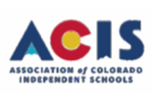
What does it take to keep a pumpkin intact despite sustaining a 75-foot freefall? That’s what students in Kindergarten through grade 5 are hoping to discover on campus during CSS’s first-ever “Great Pumpkin Drop” on Thursday, October 27, at 2 p.m. Lower School families are invited to attend.
Using the Engineering Design Process – ask, imagine, plan, create, improve – classes have been tasked with creating a pumpkin pod that will ultimately be hoisted up to 75 feet in the air by the Colorado Springs Fire Department, then dropped to the ground. The success of each pod will depend on whether its pumpkin makes it safely to the ground without smashing or cracking.
So far throughout this fun-filled STEM project, students have begun working on individual prototypes and will later vote on the best design to be tested by their grade level’s hand-picked gourd. “Students are thinking individually about what they would do first and sharing their ideas like scientists do to decide which design they want to go with as a class,” explained CSS’s Lower School Director Nathan J. Mylin. “It’s what NASA engineers do when they design how they are going to slow down a rover or a landing.”
In 3rd grade, students were divided into five groups: three worked on small prototypes, while the others built pods. One group used a tarp as a parachute, hoping to slow the pod as it falls. They attached a mesh bag of volleyballs and soccer balls before their teacher, Alex Schilperoort, hopped onto a table to test it out. It dropped quickly.

“This is about hands-on as you can get,” Schilperoort said. “Every student has an active role in creating something out of these materials. In addition to thinking through the design process, they’re also learning valuable skills working together and building a design they created.”
Third-grade student Kaitlyn F. was in a group that placed cardboard legs on the bottom of their prototype in hopes of cushioning the landing. “We're learning engineering,” she said. “It's very fun. I hope our pumpkin doesn't explode!”
With a focus on rigorous academic programs supported by experience-based learning, CSS students are active participants in learning and benefit more than students in traditional, passive educational environments.
“This is very much experiential education. It also dovetails with what we are doing in our science curriculum to make sure all students understand the Engineering Design Process,” said Mylin. “There’s a lot of excitement to see if what they invented works.”
Each class has been provided with identical pod construction materials ranging from cardboard and a tarp to styrofoam, and may use one additional material to construct their vessels.
UPDATE: Students, faculty, staff, parents, and friends from the Colorado Springs Fire Department's Station #4 gathered in front of the Trianon on Thursday, October 27, to test out their pumpkin pod designs! A good effort was put in by all students who participated, however, the Kindergarten, 3rd-grade, and 5th-grade classes took the prize!


